
Johan Christian Fabricius was a Danish zoologist, specialising in "Insecta", which at that time included all arthropods: insects, arachnids, crustaceans and others. He was a student of Carl Linnaeus, and is considered one of the most important entomologists of the 18th century, having named nearly 10,000 species of animals, and established the basis for the modern insect classification.
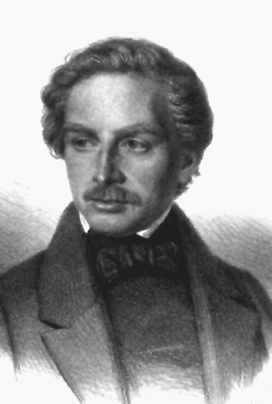
Dr Wilhelm Ferdinand Erichson was a trained medical doctor and a German entomologist.

Étienne Louis Geoffroy was a French entomologist and pharmacist. He was born in Paris and died in Soissons. He followed the binomial nomenclature of Carl von Linné and devoted himself mainly to beetles.
Georg Wolfgang Franz Panzer was a German botanist and entomologist.

Johann Rudolph Schellenberg was a Swiss artist, writer and entomologist best known for his illustrations of insects.
Maurice Auguste Régimbart was a French entomologist who specialised in Coleoptera, particularly Dytiscidae, Gyrinidae and Hydrophilidae. Regimbart worked on expedition material collected mainly from French, Italian and Belgian colonies. He was a member of the Société entomologique de France.
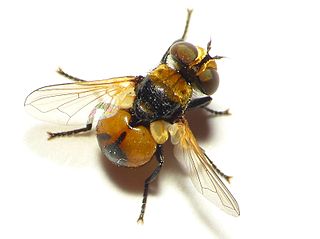
Cistogaster is a genus of tachinid flies in the family Tachinidae. Known hosts are Hemiptera of the genus Aelia sp..

Myennis is a genus of picture-winged flies in the family Ulidiidae.

Centuria Insectorum is a 1763 taxonomic work by Carl Linnaeus, and defended as a thesis by Boas Johansson; which of the two men should for taxonomic purposes be credited with its authorship has been the subject of some controversy. It includes descriptions of 102 new insect and crustacean species that had been sent to Linnaeus from British America, Suriname, Java and other locations. Most of the new names included in Centuria Insectorum are still in use, although a few have been sunk into synonymy, and one was the result of a hoax: a common brimstone butterfly with spots painted on was described as the new "species" Papilio ecclipsis.
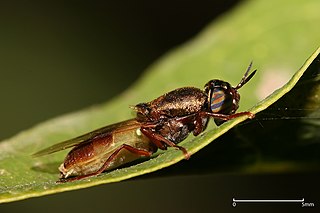
Odontomyia is a genus of soldier flies in the family Stratiomyidae.

The Milesiini is a large and diverse tribe of hoverflies. They mimic wasps or hornets.
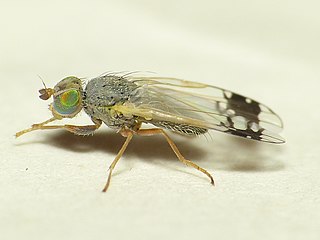
Trupanea stellata is a species of tephritid or fruit flies in the genus Trupanea of the family Tephritidae.

Neoptychodes trilineatus is a species of flat-faced longhorn beetles in the subfamily Lamiinae.
Mionochroma elegans is a species of beetle in the family Cerambycidae. It was described by Olivier in 1790. It is known from Guadeloupe, Grenada, Dominica, and St. Lucia.

Scarabaeus puncticollis is a species of beetles belonging to the family Scarabaeidae.

Arocatus melanocephalus, the elm seed bug, is a true bug in the family Lygaeidae. The species was initially described by Johan Christian Fabricius in 1798, and Maximilian Spinola designated it to be the type species of the genus Arocatus in 1837. This bug is native to Europe but has been introduced to North America.
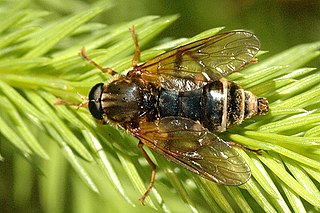
Coenomyia is a genus of flies in the family Xylophagidae.

The Incorporation is a period in Dutch history where the country was part of the First French Empire. This period lasted from July 9, 1810, until November 21, 1813.















